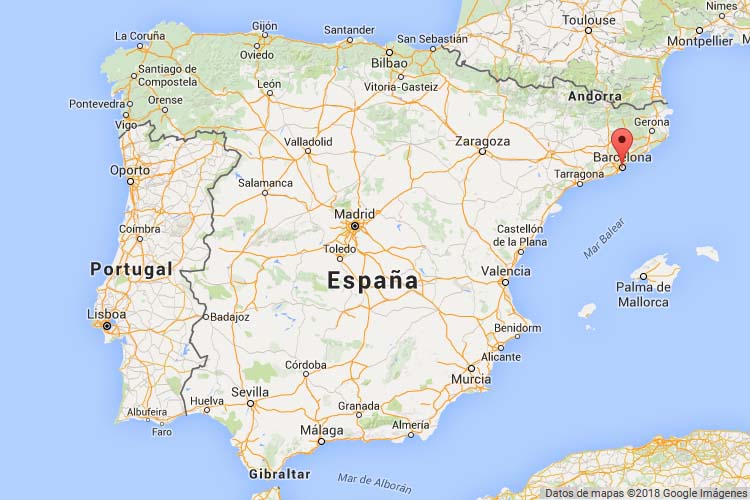From year 579, during Visigothic period, Barcelona began minting. From the year 801 the coins are minted under the name of Carlo Magno and, from 992 under the name of the Counts of Barcelona starting with Ramón Borrell.
In the 13th century, the counts of Barcelona and the kings of Aragón established the Royal Mint. The workshops where the coins were produced had no fixed place since they were buildings rented on account of Royal Finances.
This situation changed in the fourteenth century with the purchase of a house that became the permanent headquarters of the 'Seca' of Barcelona. The official factory was located at the neighborhood of Santa María del Mar, included today in the historical area of the city, characterized then, for being a neighborhood full of artisans and commercial life. This fact is reminded to us when we see the names of the streets named after those professions. In this 'Seca' coins were coined with the 'hammer' technique, widespread used.
The documented news, from the 15th century, that we have about the location of the 'Seca' are confirmed by a Royal Letter dated on the year 1441, where the 'Seca' is identified in a block of houses located between the current streets of the 'Flassaders' (blankets manufacturers), of the 'Cirera' (cherry) and the 'Seca'. We can conclude that it has been in that place since time immemorial.
The 16th century was a time of important technological advances in Europe. One of them was the coin manufacturing technique. Between the end of this century and during the next one, a new technique was invented to mint coins: the screw press (aided by roller mills).
Already in the 17th century, Catalonia did not want to remain on the sidelines and after repeated requests from the master of the mint for the implantation in Barcelona of the technique of the screw press. In 1610, the Council of the One Hundred paid him a trip to Castilla so that he could recruit a man who knew the system. This fact marked a turning point within the history of the technology of Catalan monetary coinage. A change that brought major ones in the old system. Causing that the mint ended up running out of room.
Between 1642 and 1648, on the occasion of the War 'dels Segadors', the 'Seca' was significantly extended with the purchase of new houses and their subsequent adaptation, installing animal-powered mills. But this great momentum did not last long when political circumstances changed along with the fate of the 'Seca' of Barcelona, which was intended to be put up for sale in 1659. A sale that definitely did not come to fruition.
Once this bad moment was overcome, in the 18th century the 'Seca' continued coining and maintaining the machinery until the year 1717, when Philip V forbade coining money in Catalonia, at the end of the war of secession of Charles Archduke of Austria. This closing of the mint was temporary and, therefore, the works were intermitent.
From 1718 to 1720 and as a project to unify the monetary system, a copper coin identical to the one that was minted in Segovia, Zaragoza and Valencia was coined.
After 1720, the Mint enters into a long period of inactivity, to the extent that when Ferdinand VI ordered to mint a copper coin to rescue the poor of the Principality, he had to go to the Real Ingenio of Segovia in 1754 to carry it out.
Then, because of the French occupation, the 'Seca' worked during the years 1808 to 1814 to mint money under the name of Joseph Napoleon until 1814.
Later, Fernando VII returned to reopen it until 1833.
The year 1837 the 'Seca' opened its doors to coin a new currency officially for Isabel II. In any case the mint of Barcelona was once again suppressed in 1849, although by the same procedure Isabel II ordered the 'Seca' to be reopened in 1850.
In 1868, with the advent of the First Republic, the Provisional Government decided to officially close the Mint Houses (those in Seville, Segovia, Barcelona, Jubia) and to centralize all existing production in Madrid in 1869.
Subsequently, copper coins were minted for Alfonso XII by the company Oeschger Mesdach & Company until its definitive closure in 1879.
Throughout its history, the Barcelona mint coins coins of all metals. In 1535 a large order of gold and silver was minted for the House of Seville, which could not cope with its own labors. These coins were specially requested by the king to attend the expenses of the expedition against Tunisia. In 1640 some engineers from the Barcelona Mint go to the Real Ingenio of Segovia to study and copy their roller-mills devices. In 1642 those devices are finally implanted in Barcelona (animal-powered) and until 1647 almost all the remaining properties that make up the block to expand the building are acquired. Regarding its location, it is clear that the Ceca occupies the same place in 1441 from time immemorial, and that there was an unsuccessful attempt to move it to another place in 1350.
The building, after its closure in 1879, was sold, passing onto private hands.
The Barcelona Mint
| Europe | |
| Spain | |
| Barcelona | |
| Barcelona | |
| <1000 | |
| 1879 |
Historical review
Actual state
The building is nowadays used by a shop, a Gastronomic Club, a Sculpture Gallery and flats, among other things. It takes up almost the entire block made up of the streets Flassaders, Cirera, Seca ("mint" in Spanish) and Mosques, with its main entrance on the first street. It is located at the Gothic Quarter (a place that is trending now) between the Picasso Museum and the Born Market, at two blocks of distance from each other. Part of the block is occupied by modern houses, while there are old ones where the workers of the Ceca used to live. There is also an antique shop (corner Flassaders with Mosques), and a gastronomic club next to the gallery of a sculptor (both in Seca street), all new and restored in accordance with the original structure. Lately, the City Hall has acquired part of the whole (the front and the main courtyard area) to restore it for cultural purposes.
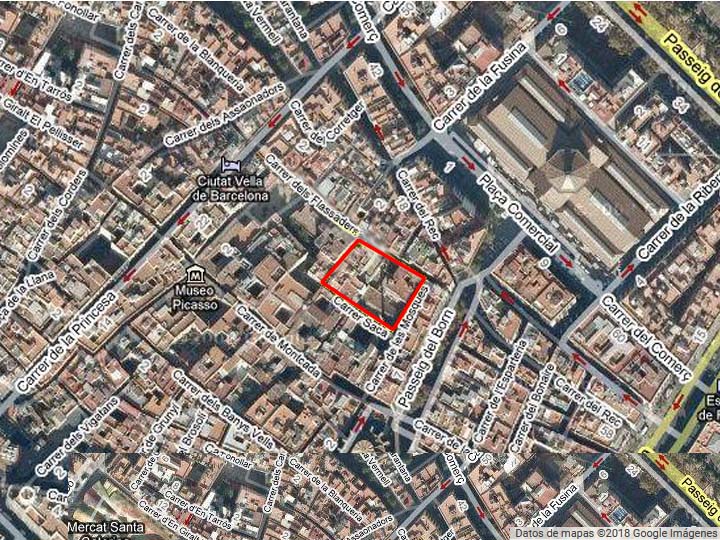
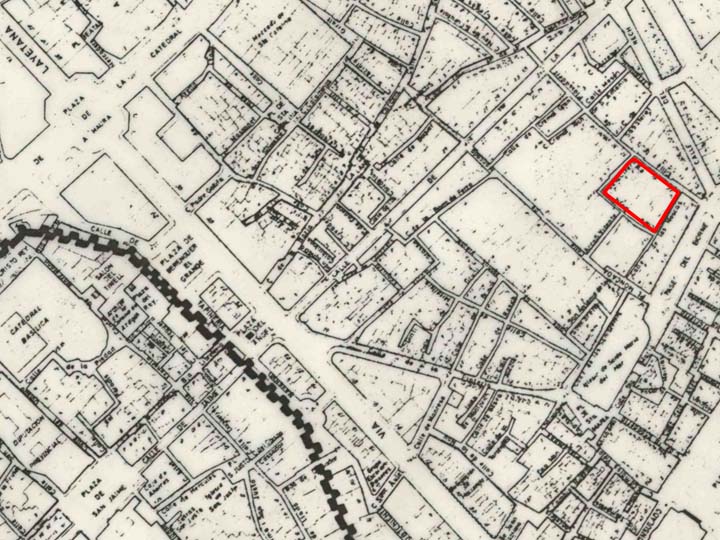
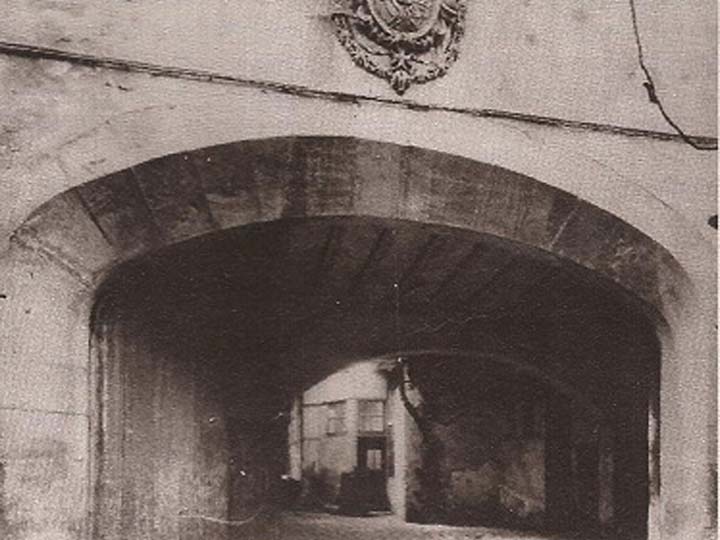
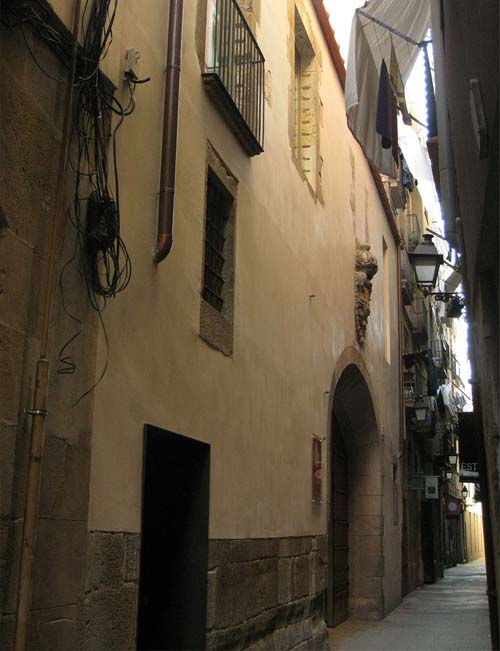
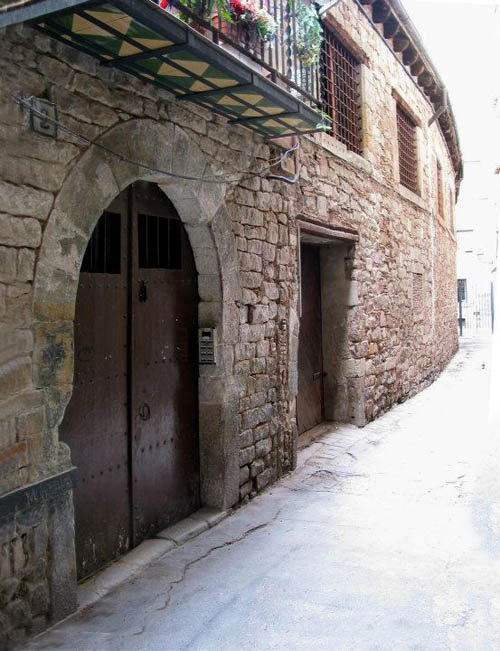
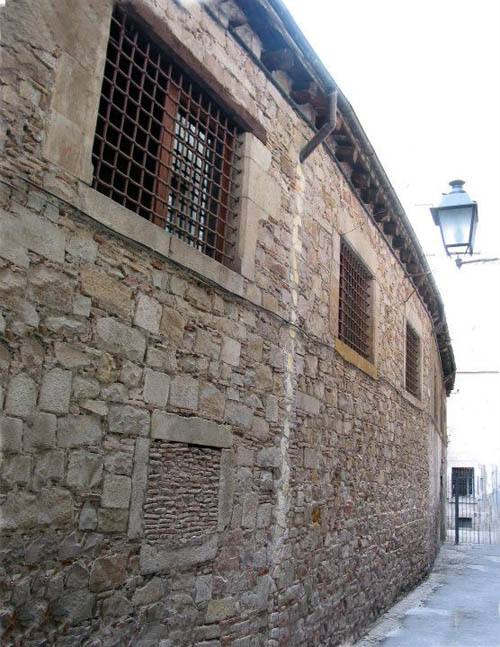
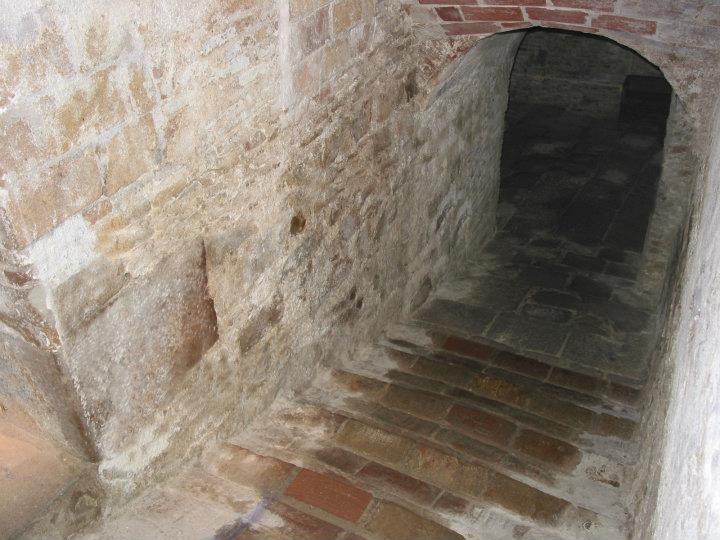
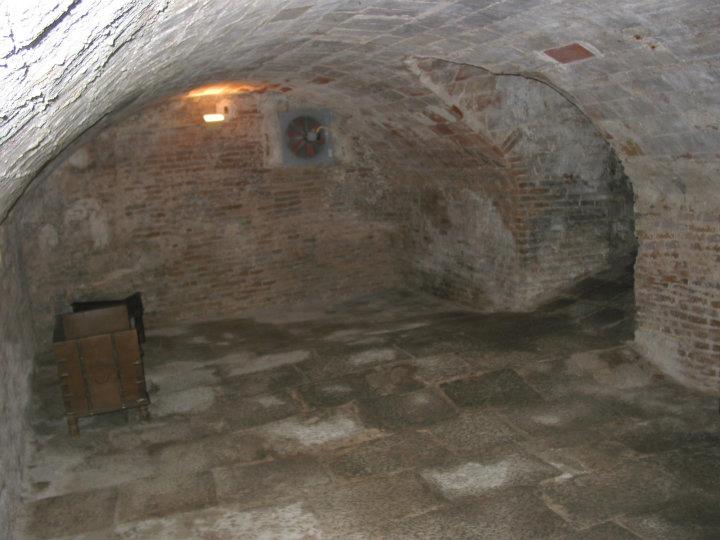
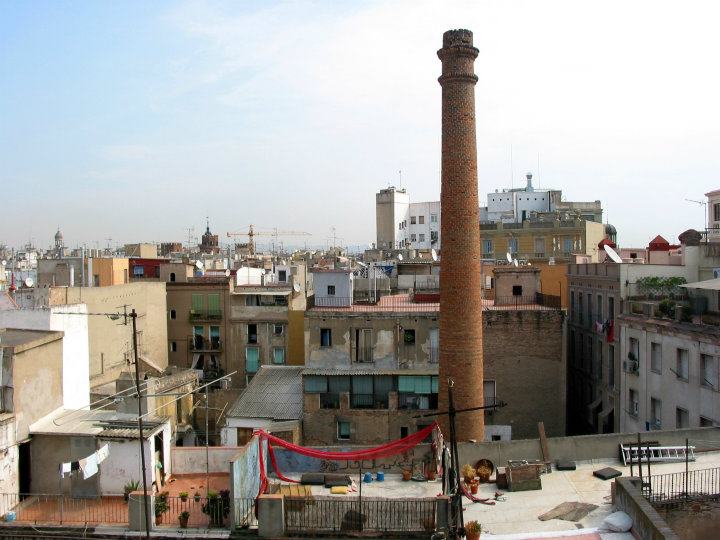
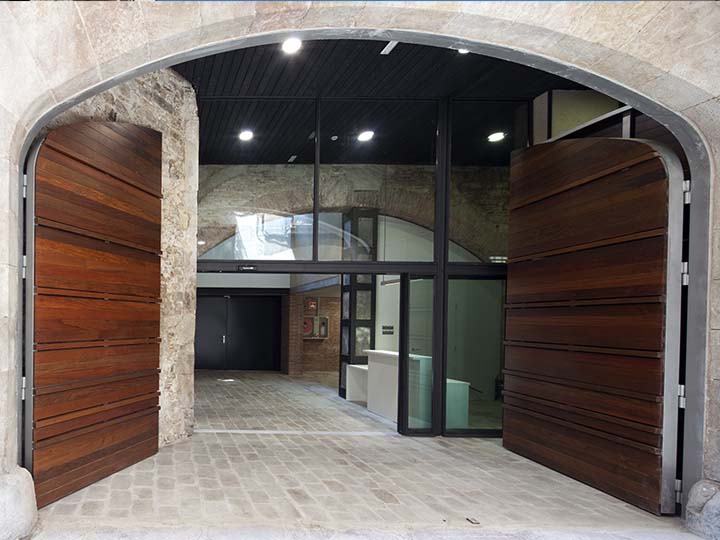
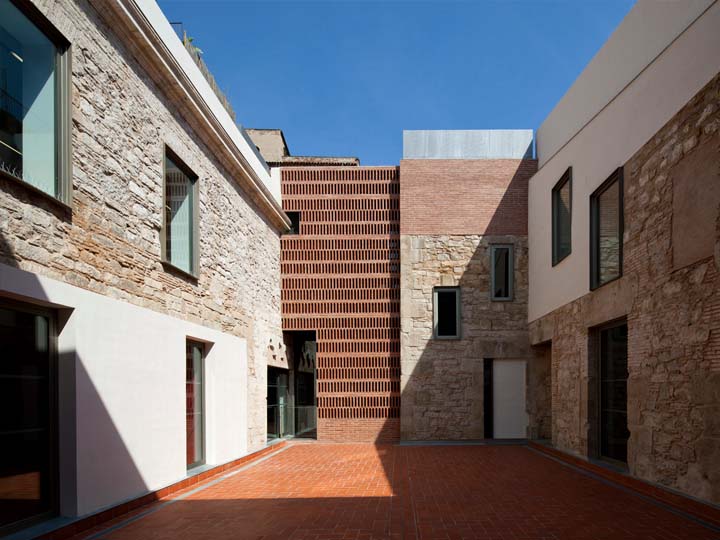
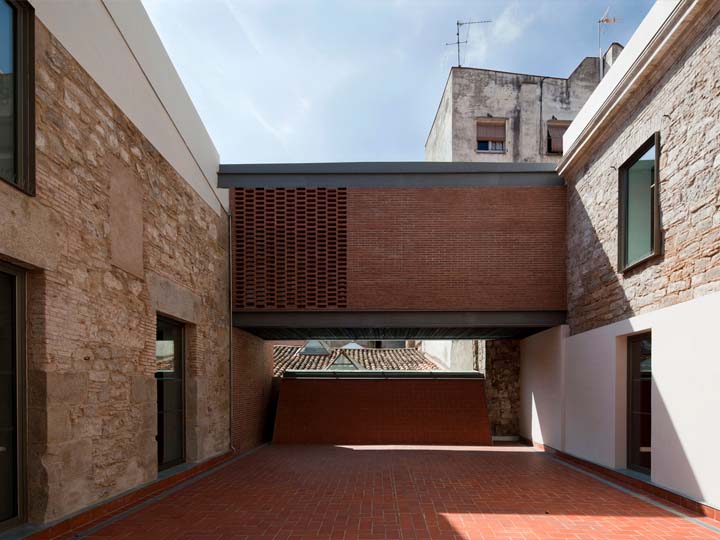












Source: Proyecto EUROMINT (Glenn Murray); La casa de la moneda o 'seca' de Barcelona (Mª Eugènia Ripoll i Roig)
Translation post-edited and corrected by: Jesús M. García Jiménez
Translation post-edited and corrected by: Jesús M. García Jiménez
Type of coinage
| Period | Gold | Silver | Copper | |
|---|---|---|---|---|
| Alfonso XII | 1874-1885 | |||
| Gobierno Provisional | 1868-1870 | |||
| Isabel II | 1833-1868 | |||
| Fernando VII | 1808-1833 | |||
| Ocupación Napoleónica | 1808-1812 | |||
| Fernando VI | 1746-1759 | |||
| Carlos III 'El pretendiente' | 1705-1711 | |||
| Felipe V | 1700-1746 | |||
| Carlos II | 1665-1700 | |||
| Guerra dels segadors | 1640-1652 | |||
| Felipe IV | 1621-1665 | |||
| Felipe III | 1598-1621 | |||
| Felipe II | 1556-1598 | |||
| Carlos I | 1516-1558 | |||
| Juana - Carlos I | 1506-1555 | |||
| Fernando II | 1452-1516 | |||
Source: eNumismatic (José David Rodriguez Soage).
Mint die-sinkers and assayers
| Mark | Period | Names |
|---|---|---|
| Estrella de ocho puntas | <1556 | Julián Carvajal |
| -- | 1808-1814 | Salvador Paradaltas |
| SP | 1818, 1822-1823 | Pablo Sala - Salvador Paradaltas |
| PS | 1836-1841, 1843-1848 | Francisco Paradaltas - Simeón Salas y Roca |
| CC | 1842-1843 | ? |
| SM | 1850 | Simeón Salas y Roca - Francisco Miró |
Source: Glosario de Maestros de Ceca y Ensayadores. (Josep Pellicer i Bru), 1997.
Author:
2017-11-16 .
